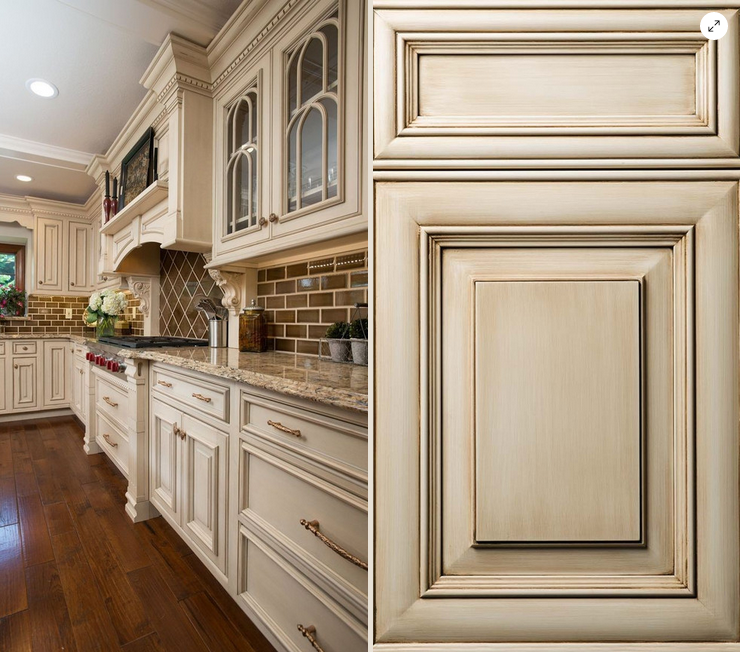For those who love being in the kitchen, it’s important to have a clean, spacious, and convenient space that’s easy to maintain. There are many styles of kitchen finishes available, including laminate designs and various hardware options. These features can add a luxurious look and feel to your kitchen. It’s important to consider the functionality of your space and make sure it’s tailored to your needs. A well-designed kitchen can make cooking and entertaining a pleasure. There are several types of finishes available for kitchen cabinet doors, each offering a different look and feel. The choice of finish can significantly impact the overall aesthetics of your kitchen. Here are some common types of finishes for kitchen cabinet doors
Glazing involves applying a thin layer of glaze over the base finish (usually paint or stain) to create an aged or distressed appearance. This finish adds depth and character to the cabinets, highlighting crevices and details.
Using a glaze to finish your kitchen cabinets can indeed be a fantastic way to achieve a rustic, aged, or antique look. Glazing can enhance the appearance of your cabinets by adding depth and dimension to their details, which is especially effective when you have intricate designs or carvings. Here are some key points to consider when using a glaze finish on your cabinets:
Enhancing Details
As you mentioned, a glaze finish is excellent for highlighting the intricate details of your cabinets. It settles into the crevices, lines, and bevels, accentuating these features and giving the cabinets a more aged or antique appearance.
Choice of Glaze
You can choose between transparent or semi-transparent glazes, depending on the level of opacity and the final look you want to achieve. Transparent glazes will allow more of the underlying paint or stain color to show through, while semi-transparent glazes can add a more pronounced antiquing effect.
Application
When applying the glaze, it’s essential to work in small sections, ensuring that you can wipe away excess glaze before it dries. This technique allows you to control the level of aging or antiquing effect you want.
Color Selection
The choice of glaze color is crucial. Darker glazes tend to create a more aged or antique appearance, while lighter glazes can offer a subtle enhancement. Consider the overall color scheme of your kitchen and how the glaze color will complement it.
Protective Finish
After applying the glaze and allowing it to dry, it’s essential to protect your cabinets with a clear topcoat or sealant. This will not only preserve the glaze but also provide durability to your cabinets, especially in a kitchen environment with high humidity and frequent use.
Practice and Testing
Before applying the glaze to your actual cabinets, it’s a good idea to practice on a scrap piece of wood or a small, inconspicuous area to ensure you achieve the desired effect.
Maintenance
Keep in mind that glazed cabinets may require periodic maintenance to maintain their appearance. Regular cleaning and occasional touch-ups may be necessary.
In summary, using a glaze finish on your kitchen cabinets can be an excellent way to create a rustic or antique look while highlighting the details of your cabinet design. It’s a versatile technique that can be customized to achieve the desired level of aging or antiquing, making it a popular choice for those seeking a unique and visually appealing cabinet finish.
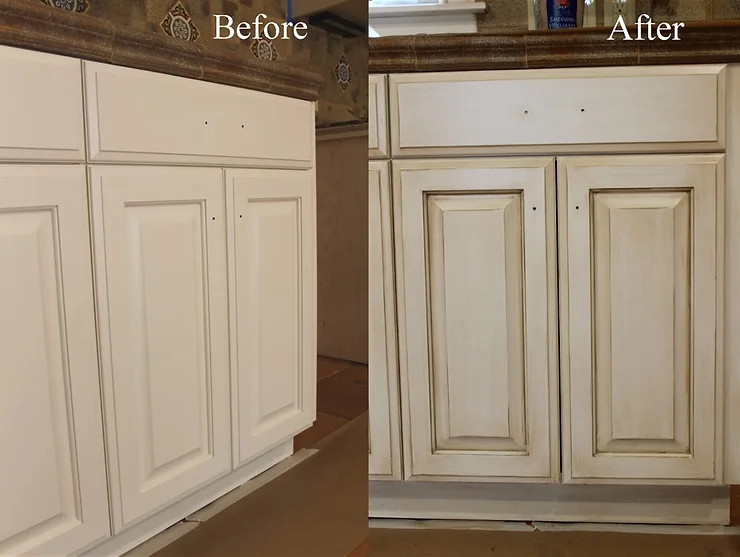
Advantages
- Highlights unique cabinet details
- Gives cabinets a rustic, aged look
- Can protect and enhance stain or paint
Disadvantages
- Can be a polarizing style, affecting your home’s resale value
- Adds cost to painted or stained cabinets
- Time consuming DIY
- Difficult to repair or refinish
Distressed Finish

Distressed finishes intentionally create a weathered or aged appearance. Techniques like sanding, denting, or scraping are used to give the cabinets a rustic or antique look.
For those who love a vintage-inspired aesthetic, distressing is a great option. This process creates an aged and weathered appearance for cabinets, achieved through various techniques that produce small nicks, dents, and scratches on the surface. This can be an excellent way to add character and charm to your home.
Ways to distress wood cabinets include.

Worm holing – This style of distressing mimics the look of small wormholes within the wood.
Rasping – With rasping, the wood is given the appearance that it was hand cut by craftsmen.
Cracking – This technique mimics cracks in solid wood, creating the effect that the wood has gone through years of changes in temperature and humidity.
Wearing – In this case, the doors are sanded down at the edges to give the appearance that the wood has been worn. The wearing also allows for a two-tone effect. The top finish is worn away to show the wood finish underneath.
Scraping – Scraping simulates the wear and tear of wood that had items fall and ‘scrape’ against it.
Gouging – Gouging looks as though pieces have been physically notched out of the wood.
Textured Finish
Textured finishes add dimension and tactile interest to cabinet doors. Common textures include embossed patterns, brushed, or hammered finishes.
Textured cabinet doors are a popular choice in interior design and kitchen remodeling. They add depth, character, and visual interest to kitchen cabinets or other cabinetry throughout the home. Textured cabinet doors can be achieved through various techniques and materials, each offering a unique aesthetic and tactile quality. Here are some common ways to create textured cabinet doors
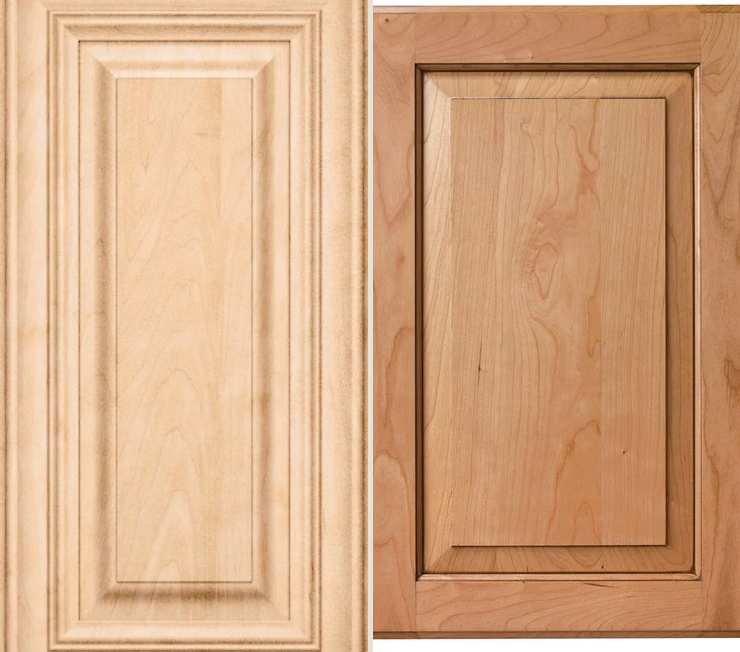
Raised Panels: Raised panel cabinet doors have a central panel that is raised above the surrounding frame. This creates depth and dimension, adding texture to the door’s surface. Raised panels can be further enhanced with decorative detailing or molding.

Recessed Panels: In contrast to raised panels, recessed panel cabinet doors have a central panel that is lower than the frame, creating a sunken or textured appearance.
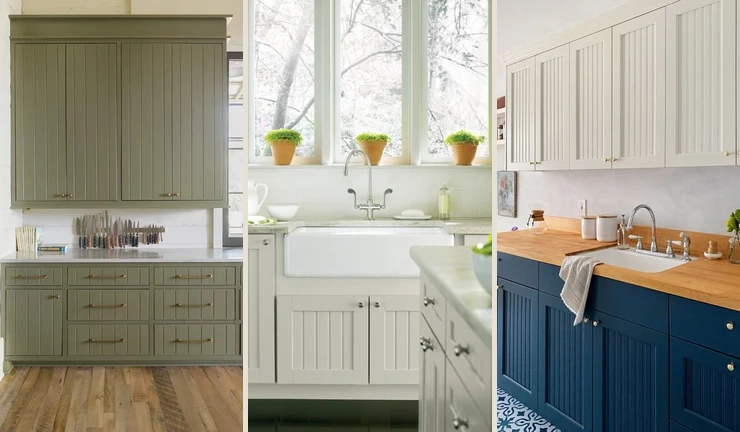
Beadboard: Beadboard cabinet doors feature narrow vertical planks with small ridges or beads in between. This style is reminiscent of traditional cottage or farmhouse design and adds a charming texture to cabinets.

Shaker Style: Shaker-style cabinet doors often have a simple, flat center panel surrounded by a frame. The frame itself can have a variety of profiles, adding subtle texture to the doors.
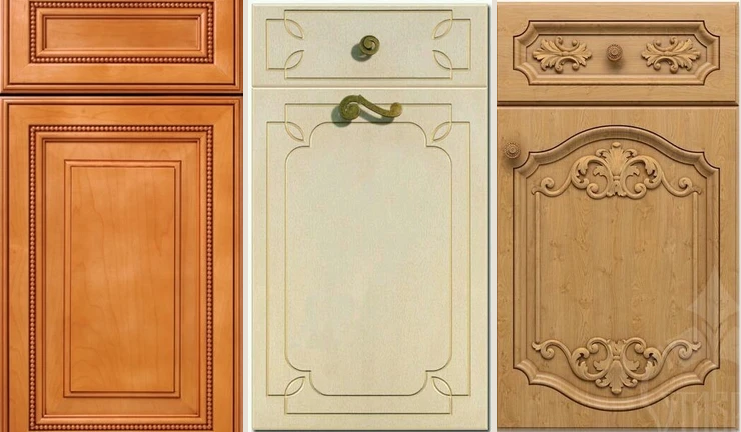
Carved or Embossed Details: Cabinet doors can be custom-designed with intricate carvings or embossed patterns to add a three-dimensional texture. This option allows for a high degree of customization.
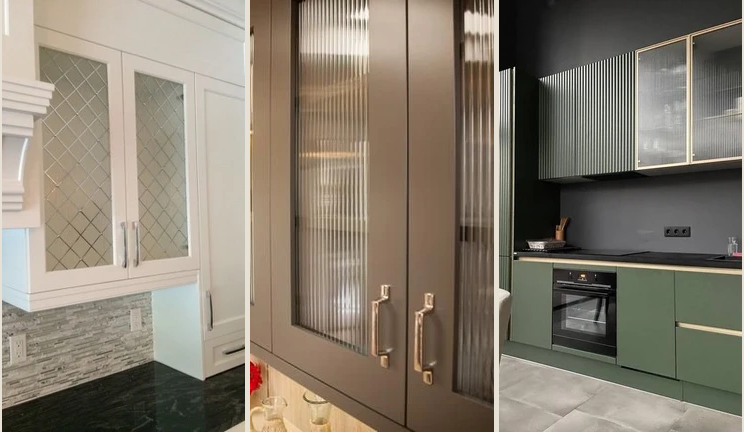
Glass Inserts: Some cabinet doors incorporate textured glass inserts. These can include stained glass, frosted glass, or seeded glass, which not only adds visual interest but also diffuses light.
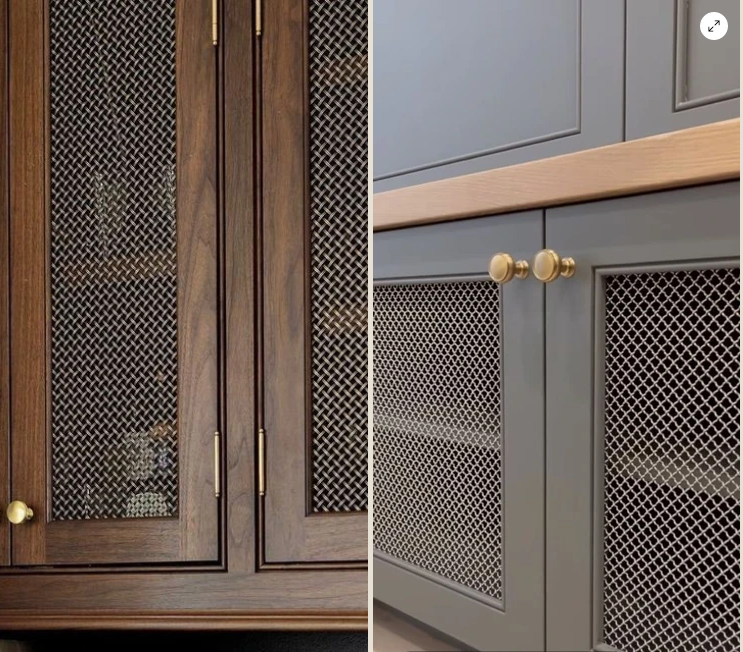

Wire Mesh Inserts: Wire mesh inserts can be used in cabinet doors to provide a unique, industrial texture. They are often seen in vintage or rustic-style kitchens.
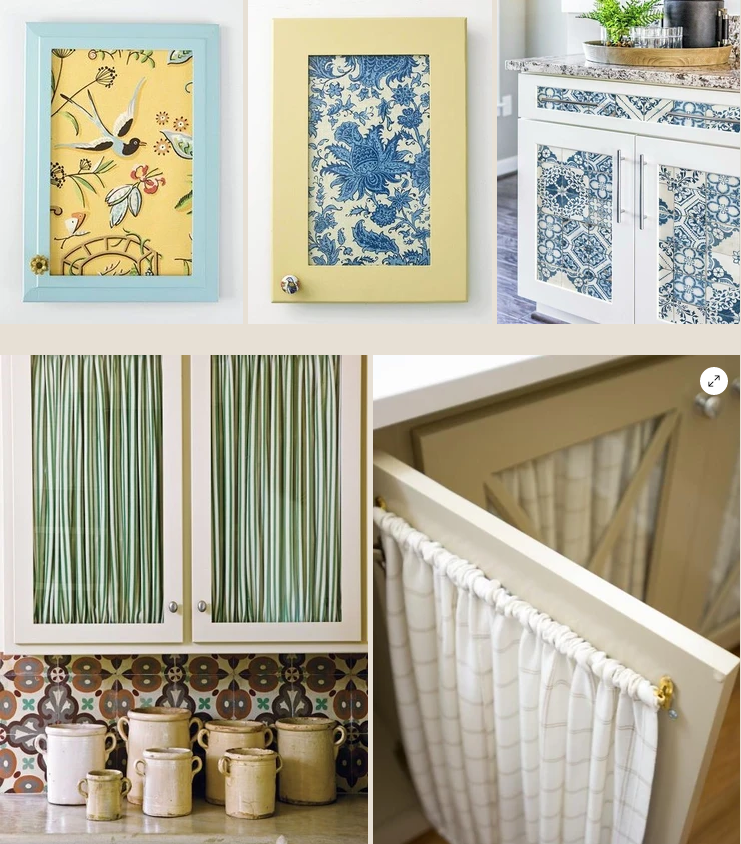
Fabric or Wallpaper Inserts: Another creative option is to use fabric or wallpaper to create textured inserts in cabinet doors. This approach allows for a wide range of patterns and textures.
When choosing textured cabinet doors, consider the overall design style of your space and how the texture complements other elements in your kitchen or room. Additionally, think about maintenance and cleaning, as some textures may require more care than others. Textured cabinet doors can greatly enhance the visual appeal and tactile experience of your cabinetry, making them a versatile and stylish choice for any home.
Natural Finish

For those who prefer the natural beauty of wood, a clear, natural finish allows the wood’s grain and color to shine through. This finish is often used on high-quality hardwood cabinets.
Leaving cabinets unfinished or opting for a natural wood finish can indeed be a popular and attractive choice for kitchen design. Here are some key points to consider about this trend:
Aesthetic Appeal: Natural wood cabinets can add warmth, character, and a timeless appeal to your kitchen. The unique grain patterns and imperfections in the wood can give your kitchen a rustic or organic feel.
Diverse Wood Choices: Different wood types offer various appearances. Oak tends to have a strong grain pattern, while maple provides a smoother and more uniform look. The choice of wood can greatly influence the overall appearance of your kitchen.
Durability: As mentioned, the type of wood you choose will affect the durability of your cabinets. Hardwood options like oak, cherry, and hickory are excellent choices because they are sturdy and long-lasting. Proper maintenance will help ensure they stand up well over time.
Maintenance: Unfinished or natural wood cabinets may require more maintenance compared to cabinets with a protective finish. Wood is susceptible to moisture, so it’s essential to keep them clean and dry to prevent damage.
Clear Varnish or Sealant: Applying a clear varnish or sealant to natural cabinets is a practical compromise. This protective layer can enhance durability by preventing moisture and stains from penetrating the wood. It also helps maintain the wood’s natural color and appearance while providing some level of protection.
Customization: With natural wood cabinets, you have the option to stain or finish them in a way that suits your design preferences. This allows for a unique and personalized kitchen look.
Trends and Timelessness: While natural wood cabinets are trendy, they also have a timeless quality. They have been used in kitchens for generations and are unlikely to go out of style.
In conclusion, the choice between leaving your cabinets unfinished or applying a clear varnish depends on your aesthetic preferences and how much maintenance you are willing to undertake. Both options can provide a beautiful and durable kitchen design, and it ultimately comes down to the specific wood type, finish, and overall look you desire for your kitchen.

